Herbert Stanley Copeland was the oldest son of Herbert Copeland who had a drapery shop in Market St, Bottesford, at the turn of the Century. Herbert attended Bottesford National School from 1898 until some time between 1903 and 1909 when he moved to Derby. He served with the Royal Engineers from 1915, then after the war lived in London. He worked on the railway until his death in Derbyshire in 1945.
Early life
Herbert Stanley Copeland was born in 1890 at Litchurch, in Derby, the oldest child of Herbert and Fanny Copeland.
In the 1891 census, the Copelands lived on Normanton Road, Litchurch, where his father (b.1864 in Sleaford, Lincs) worked as a draper. His mother Fanny (b.1868) came from Burton on Trent. Herbert was less than a year old and there were no other children. There were two boarders, Ellen E Copeland, 21, a draper’s assistant who came from Walsoken, Norfolk, and Herbert C Johnson, 19, a draper’s apprentice from Middlesex.
By 1898, the family had moved and presumably set up their drapery shop on Market St, Bottesford. The Grantham Journal reported that in August, 1898, in an article entitled The Crusade Against Anti-Vaccinators: Heavy Penalties Herbert Copeland snr was one of four defendents fined £1 at Spittlegate Magistrates for refusing to have his children vaccinated. There is a record of Herbert being admitted to Peartree School in Derby on the 17th October 1898, having previously been at Bottesford National School. However, his time at Peartree School was very short, as he was withdrawn on the 14th November that same year (and presumably returned to Bottesford).
In the 1901 census, the Copelands were at 36 Market St, Bottesford, presumably where they had their draper’s shop. There were now seven children: Herbert Stanley (aged 10), Lillian G. (9), Agnes M. (7), Clarence R. (6), Joseph C. (4), Annie D. (3) and Rose G. (1), and also a domestic servant Annie King (17) from Bottesford. Research by Susan Middleton allowed her to publish on this website “A little history of Bottesford”: pages from a lost manuscript recording recollections of the old village which includes this reference: Mr. Woods house and shop were taken by Mr. Copeland as a ladies outfitting dresses, hats, shoes etc. This refers to the shop which later became Moulsher’s general store and then the ‘Rutland Studio’. Also at this time (1901), next door to the Copelands lived the Shaw family, whose son Frederick then 17 was the first Bottesford man to lose his life in The Great War, on the 22nd October 1914, while serving with the Leicestershires in Flanders.
In June, 1903, Herbert Stanley Copeland was one of eight scholars awarded a County Scholarship at Bottesford School (reported in the Grantham Journal) and moved to Sedgebrook Secondary School before becoming a pupil-teacher back at Bottesford and then attending Grantham Technical Institute. His name is one of those recorded on the scholarship boards still on display in the former school room, now a meeting room known as the Fuller Room. However, in 1909 he left this area to begin his lifetime’s career working on the railway.
By 1911, Herbert had moved to 21 Strutt Street, Derby, where he lived with his uncle’s family, the Mathers. He was now twenty, working as a clerk in a ‘boiler shop’. His uncle George Henry Mather, 52, was a tailor and draper who came from Belper, and his aunt was Amelia Sarah Mather, also 52, who came from Etruria, North Staffordshire. In the census, she described herself as a ‘colporteur in religious literature’ (an itinerant bookseller). There were also three children at home, Ophelia George (a daughter, aged 27, employed as a ‘cap assistant mistress’, Eva 23, not working, and Vernon Lewis 19, an engineering apprentice.
Herbert and Catherine Brisbane (daughter of James Brisbane and Frances Emma Auckland) were married in the 2nd quarter of 1915 in Newark, Notts, probably shortly before he left to join the army. Their daughter, Myrtle, was born in January 1916.
Service Record
In First World War, Herbert Stanley Copeland served from 1915 to 1918 as a Sapper in the Royal Engineers, service numbers 240099 and WR/265814, and was awarded a 2nd Corporal stripe. He served in the RE Transportation division. At the end of the war he was awarded the Victory Medal and British War Medal.
Life after the end of the First World War
After the war, Herbert returned to the St Pancras area of London. Electoral records indicate that he and his wife lived at 36 Ospringe Road, Kentish Town.
In 1925, Herbert and Catherine moved to “The Apiary”, Berry Lane. Laindon (Langdon) Hills, Essex.
In the 1939 census, Herbert S Copeland, born 10th June 1890, a railway clerk, was living at Wigwell Mill, Wirksworth, Derbyshire. Also at this address were his wife, Catherine E Copeland, b.1890, and their daughter Myrtle, b.1916, a shorthand typist.
Herbert Stanley Copeland died in August, 1945, aged 55, and was interred at Alderwasley, Derbyshire. His obituary was printed on the 17th August, 1945, in the Grantham Journal.

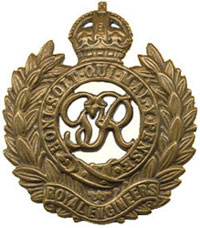
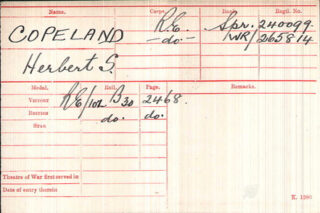
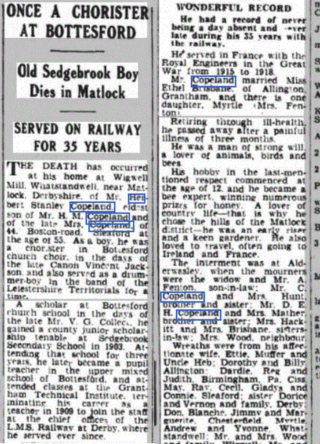
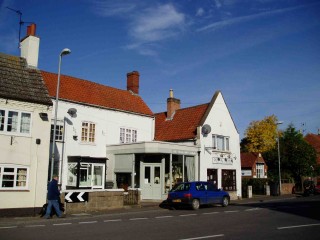
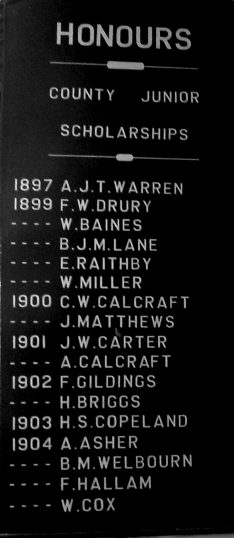








No Comments
Add a comment about this page